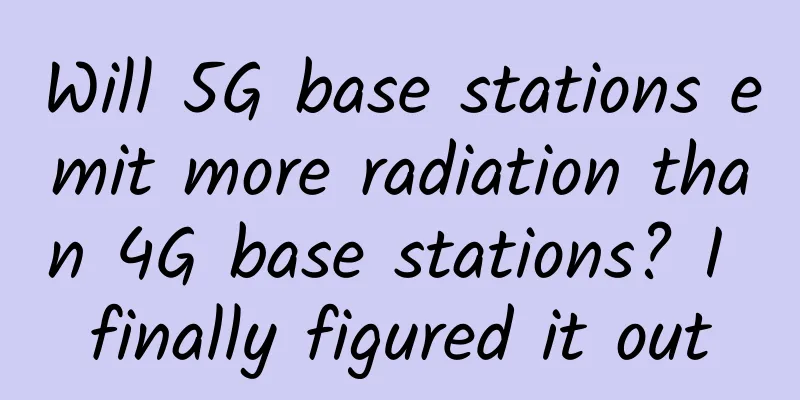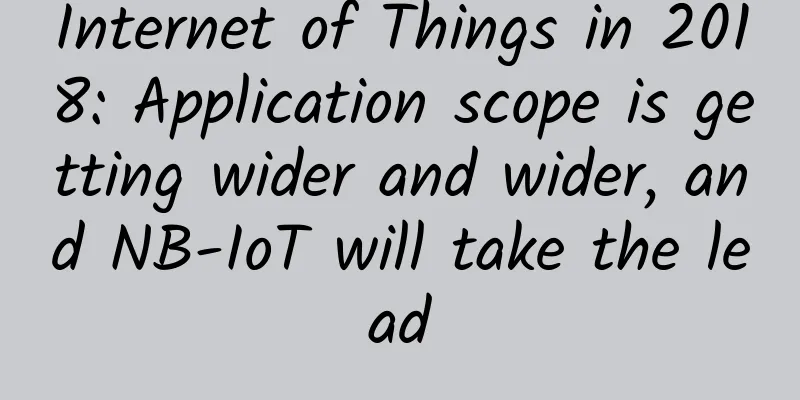Will 5G base stations emit more radiation than 4G base stations? I finally figured it out

|
Despite repeated popularization of knowledge, many people still have misunderstandings about base stations, and many communities have experienced the farce of dismantling base stations and being unable to make or receive calls. So how much radiation does a base station emit? Recently, at the 5G High-end Dialogue Forum of the Big Data Expo hosted by China Unicom, Wu Hequan, an academician of the Chinese Academy of Engineering, said, "Many people mistakenly believe that base stations are dangerous for electromagnetic radiation. The radiation standard for 4G base stations in the United States is 600 microwatts per square centimeter, while China's electromagnetic radiation standard is only 40 microwatts, which is 10 times stricter than that of the United States." In fact, the radiation from a communication base station is not as strong as that from a room full of home appliances. At 10 meters from the base station, the radiation is only 1.5 microwatts, while the radiation from a microwave oven at home is 168 microwatts. At the same time, because the radiation coverage area of the communication base station antenna is relatively wide, the radiation power is dispersed over an area of several square kilometers, and the distance from the human body is often more than 10 meters, so the impact on the human body is relatively small. At the same time, being close to a base station does not necessarily mean that the radiation is large. The electromagnetic waves of the base station are mainly emitted in the horizontal direction and are significantly weakened in the vertical direction, so the power density is often the smallest directly below the base station. So will 5G base stations radiate more than 4G base stations? Wu Hequan also gave a negative answer: "The radius of 5G base stations is smaller than that of 4G, and the power is lower." 5G network is faster than 4G, not by increasing the signal transmission power of communication base stations, but by expanding the transmission bandwidth. 5G base stations are less than 40 microwatts per square centimeter, just like 4G base stations. Moreover, the denser the base station coverage, the better the mobile phone signal reception, and the less electromagnetic radiation users will be exposed to. Therefore, as more and more communication base stations are built, the signal will be better and the radiation will be smaller.
|
<<: DNS communication protocol based on privacy protection technology
>>: China Construction Information: Friends of Huawei, with friends Huawei
Recommend
5G bearer technologies have their own advantages, but optical fiber transmission is still a mystery
Recently, China Telecom released the "5G Era...
CUBECLOUD new Hong Kong international line monthly payment starts from 39 yuan
CUBECLOUD (Magic Cube Cloud) recently launched a ...
The official version of PCI-E 4.0 specification is here! Bandwidth doubled again
At the Hot Chips conference, PCI-SIG said it woul...
Five things you need to know about the current state of 5G
5G is a rare combination of national will and mar...
How the global 5G network will reshape future defense strategies
Explore the impact of global 5G networks on futur...
The operators’ 5G investment budget has been determined. From construction to application, what other challenges are there to overcome?
According to statistics from China News Service, ...
Computer Network: ICMP Protocol (Internet Control Message Protocol)
Today I will talk to you about the knowledge rela...
IoT smart home solutions create intelligent products based on scenarios
"Connected World: Smart Homes Are Key to Fut...
Teach you how to use the next generation Internet protocol "IPV6"
IPv6 is called the "next generation Internet...
How energy-efficient networks support sustainable development
As extreme weather conditions wreak havoc, compan...
The three major operators announced the "Implementation Rules for Number Portability Service"
On November 10, the Ministry of Industry and Info...
How will 6G change the workplace?
The next generation of connectivity is coming, pr...
5G messaging has become a hot topic, but it still needs to overcome two obstacles to become bigger and stronger
On April 8, 2020, the three major operators joint...









